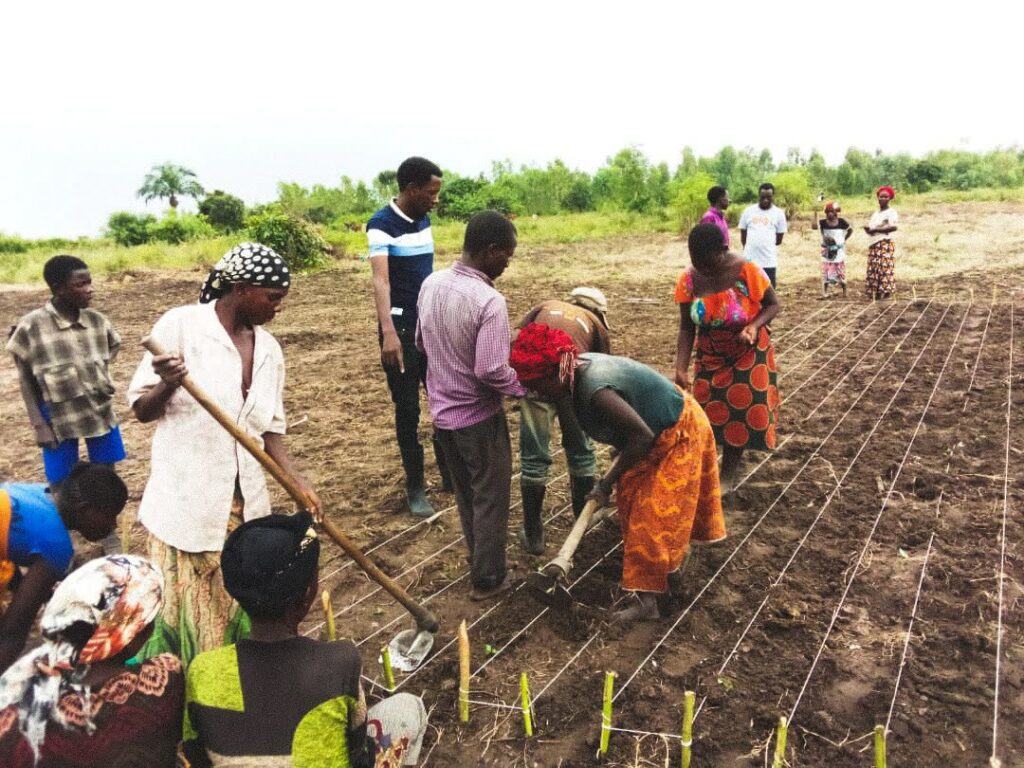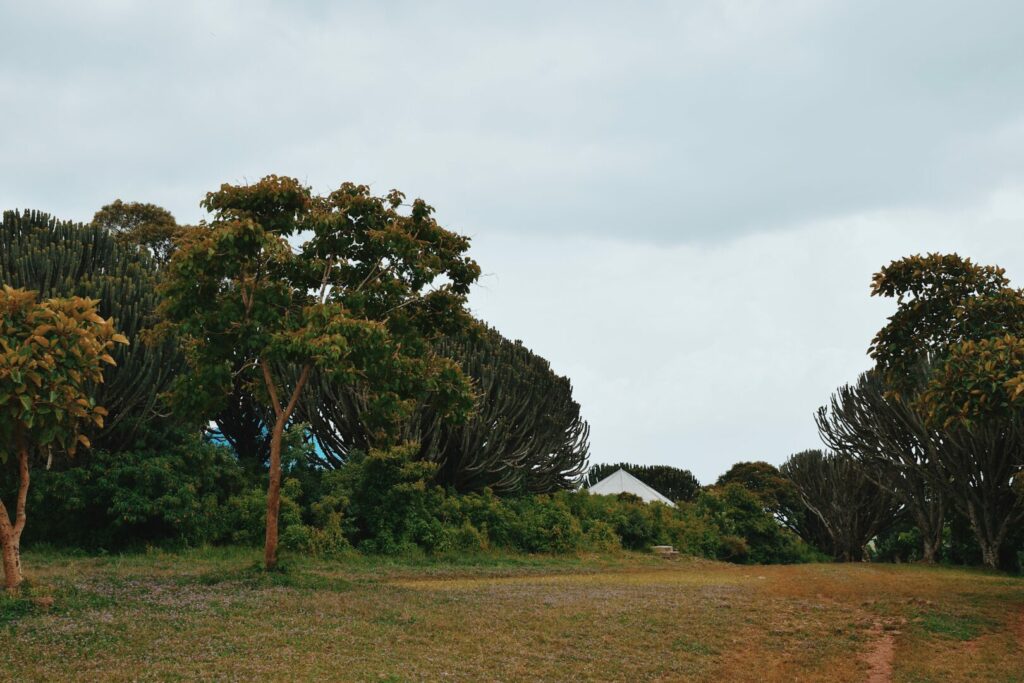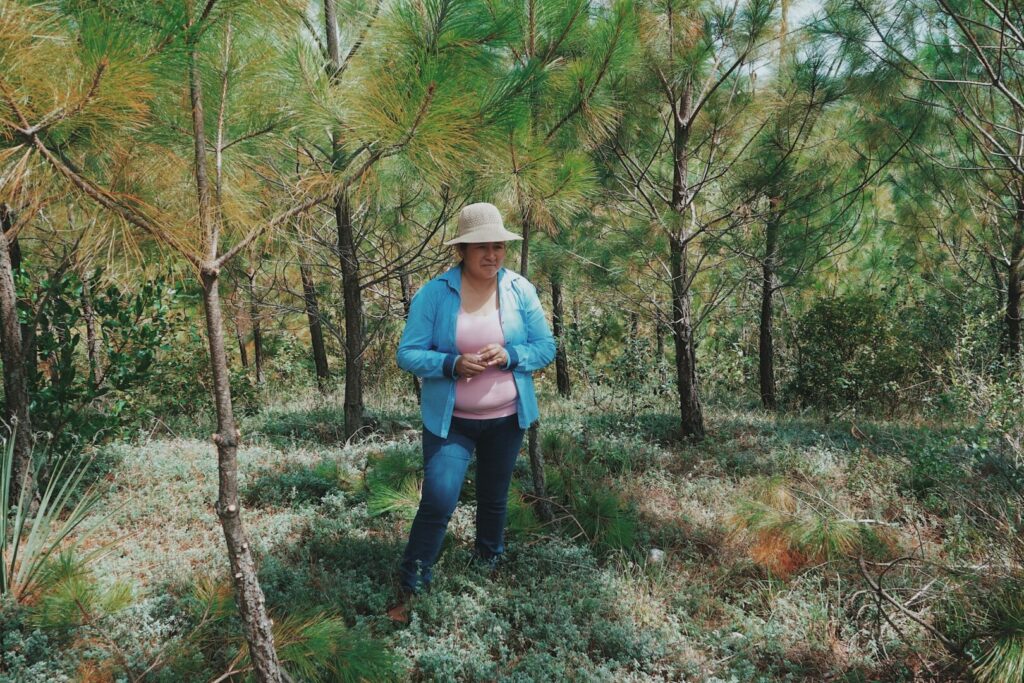Create abundance for both people and planet
It isn’t rare to hear stories of environmental loss and damage. From wildfires to drought to mass deforestation and pollution, so many of our beloved places on Earth are under constant threat. How can we help protect the natural world? These threats are real and urgent, but what do we do next? What are the solutions?
The good news is that our planet is designed for healing and repair. From animals that regrow limbs to trees that can restore a degraded part of a forest to our bodies’ ability to respond to wounds and infections, simple acts of restoration can result in an astonishing amount of healing. While the ecological threats to our planet need to be taken seriously, it’s also important to remember its capacity for abundance. Recognizing and responding to that may be the key to restoring our damaged ecosystems.
There are many possible places to begin, and it's hard to make a wrong choice since all life on our planet is interconnected. But here are a few ideas to focus our efforts:
Restore the Soil
Soil health on our planet is vital. Soil supports plant growth. While it’s easy to dismiss soil as the simple dirt beneath our feet, it's this earth that contains the most foundational elements for all of life. The microorganisms within soil form the building blocks of food webs and complex ecosystems.
About half the soil around the world is considered degraded. Degraded soil can’t support plant life, which contributes to food insecurity and elevates the threat of extinction. Degraded soil also releases stored carbon into the atmosphere, further intensifying climate change. Without healthy soil, we can’t eat. In subsistence farming communities, this can lead to desperate behaviors that further environmental damage.
Restoring soil health can happen a number of different ways, but one key way is regenerative farming. Because a lot of soil damage happens on land that is used for farming, learning new farming skills (or re-learning indigenous farming skills) that support soil health can help restore these areas. Regenerative farming can include practices like composting, minimizing soil tillage, or practicing crop rotation appropriate for that place. These practices minimize the release of carbon and organic matter from the soil and retain more nutrients within it.

Consider Water
Water is life. Unfortunately, around the world 700 million people lack access to clean water. As droughts and dry seasons grow longer and less predictable, many ecosystems suffer from water scarcity. Water pollution also spreads disease, kills crops, and intensifies soil degradation.
The Earth’s contours determine the flow of water (though, one could also say that the flow of water shapes the Earth’s contours!) This dynamic is one of the many interactions that link lives across an area of land. To say this another way, what happens upstream has big downstream effects. In Burundi, highland village communities planted bamboo grass along the Mugere River to prevent runoff, leading to more water reaching the valley that housed the city of Bujumbura. Because of this, many locals in the city were able to collect water, bathe, and wash clothing.
Protecting the groundwater in an area is also critically important. Healthy soil, plant life, and water support each other. Plant With Purpose promotes watershed management in its work with rural communities. This ensures that when community members learn the skills needed for ecosystem management, they can use them in a water-conscious way.
Protect Indigenous Land Rights
Around the world, indigenous communities often face exploitation and a loss of rights. This can include a lack of representation in governance, a lower quality of life, and social exclusion. These are not only failures from a human rights perspective, but they also present broad-level ecological threats.
Indigenous communities have generations of experience managing land within ecosystems. Often, new environmental threats are introduced as people drift further away from that ancestral knowledge. One stark example is with wildfire management, particularly from California to British Columbia. It is now widely accepted that indigenous approaches, such as accepting some fire as part of an annual cycle, can help prevent more devastating mega-fires.
While indigenous communities manage about 20% of the Earth, those lands contain around 80% of the world’s biodiversity. We need the knowledge and leadership of indigienous communities in the face of our global climate crisis to protect the natural world.

Diversify, Diversify!
Diversity is resilience. This is true when it comes to human culture and thought, but it is also true when it comes to biological diversity within an ecosystem. Genetic diversity among plants can help prevent the spread of disease or the excessive predation of a pest.
In any ecosystem, food webs and linkages must be kept in careful balance. There are far too many examples of well-intended but misinformed introductions of a new species to an ecosystem to disastrous consequences. Being able to prevent the proliferation of invasive species while supporting the species that exist in an ecosystem is delicate work, but it is crucial for planetary health.
Invest in Women’s and Girls’ Futures
Working to advance gender inclusion and create more opportunities for women and girls is not only a good thing to do for its own sake, but it also yields many benefits for our planet’s environmental health.
Because of their pre-existing vulnerabilities, climate change impacts women and girls most severely. In many parts of the world, they are at greater risk of food insecurity, death, or injury from natural disaster or being exploited due to resource scarcity. Progress on gender inclusion is inextricably tied to progress on climate change.
In the world’s most climate vulnerable communities, women are at the forefront of natural resource management. Women grow 60 to 80 percent of the world’s food, and manage sources for fuel and water. This comes in spite of many laws and social obstacles that prevent them from owning land or having secure land rights.
Expanding these rights and promoting education are two of the most impactful ways to protect the natural world through supporting women and girls. Globally, 130 million girls are deprived of a basic education, which results in better health, greater agency at home, more financial security, and lower carbon emissions. Even for adults, training in regenerative agriculture and land management can help improve quality of lives and ecological health. Currently, two-thirds of Plant With Purpose participants are female.
Plant a Lot of Trees
One of the most straightforward ways to protect the natural world and heal the environment is through tree planting. Healthy forests absorb greenhouse gasses caused by human activity. Without trees to anchor soil and minimize intense sun exposure, soil erodes and degrades quickly.
Trees absorb pollutants that are bad for the atmosphere and our physical bodies. An abundance of trees cleans the air we breathe. They also capture rainwater, filter water through their roots, and strengthen soil’s water retention. Because a single tree can house hundreds of insects, lichens, mosses, fungi, and animals, trees are also critical to biodiversity.
Planting trees helps humans to flourish as well. They provide food and financial security, particularly in vulnerable agricultural communities.
Tree planting is both simple and complex. It does not take a scientist to see the immediate benefits that a healthy forest provides. It is also a low-cost solution that can be easily deployed in many areas. At the same time, reforestation must be done judiciously. Tree species and location selection are key considerations. Plant With Purpose prioritizes planting the right tree in the right place, over sheer quantity, for the sake of whole ecosystem health.

Stop Deforestation
Simply planting trees is not enough alone to protect the natural world. It is also important to protect trees and native forests. In many ecosystems, deforestation poses a major threat. Every day, around 80,000 acres of forests are removed from the Earth.
The urgency of climate change means that tree planting is incomplete if those efforts are not paired with a reversal of deforestation. While planting millions of trees this year is a good thing, it will take those trees decades to reach the carbon sequestration capacity and interspecies activities seen in old growth forests. We do not have decades to spare when it comes to reducing emissions.
There are many causes of deforestation around the world. In the northwest United States, it is often industrial production of goods ranging from lumber to tissue paper. In the countries of Brazil and Indonesia, it is most driven by the demand for beef and palm oil. In low income nations like Haiti or Burundi, it can be driven by the desperate need for income and the opportunity to turn trees into charcoal for quick cash.
Start Where You Are
Our world is complex and interconnected. It’s also valuable to remember that protecting vital ecosystems—from the Amazon to the Maldives—doesn't require being there. Our different ecosystems are linked, and climate change ultimately has an impact on all of us.
The choices we make with the products we use, the policies we support, and the practices we adopt ultimately do or don't protect the natural world. We are members of an invisible community. When we remember that our daily decisions have an impact on our planet as a whole, we can make choices that build abundance.



















A good set of recommendations. However, I must disagree with the statement associating forest management in the northwest US with deforestation. How are you defining "deforestation?" If you mean a loss of native forest cover then as a retired forester who had a 33-year career in both the government and industrial sectors in Oregon I can state that deforestation has not occurred from "industrial production of goods." All forest landowners are required by law to promptly replant forest areas with native species after commercial harvesting. Where forest cover has been lost in tye northwest US it is more likely the result of the conversion of forest land to other uses, such as residential development, or areas that have not yet been reforested after wildfires.
I refer you to this technical report prepared by the program I used to supervise: https://ir.library.oregonstate.edu/concern/technical_reports/0c483p903?locale=en